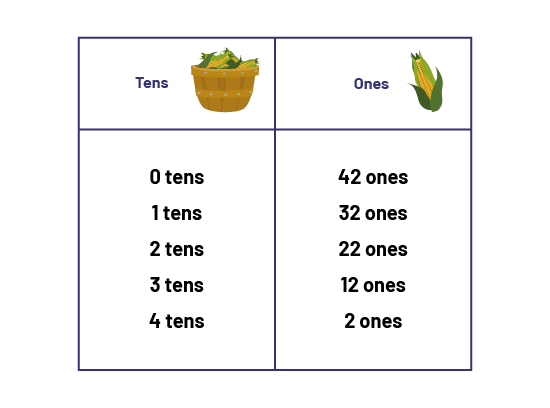B1.1 Read, represent, compose, and decompose whole numbers up to and including 200, using a variety of tools and strategies, and describe various ways they are used in everyday life.
Activity 1: Number Chart (Composing a Number)
Directions
Distribute a 100 or 200 number chart and some counters to students. Prepare the same chart on the interactive whiteboard. Tell students that they will be doing a number hunt on their chart.
Write codes such as: 23 🡡🡡🡠
Explain to students that the number written is the starting number (23). The arrows indicate the direction of movements.
Example
23 🡡🡡🡠
- the starting square is 23;
- 🡡 indicates to move up one square (13);
- 🡡 indicates to move up one square (3);
- 🡠 indicates that the next number is in the left box (2).
So, the finish number is 2.
Once students have found the number, model the path on the projected chart. To support them in seeing the relationships between numbers on the path, have them observe how the number changes when the arrows point in different directions; for example, when the arrows point up, the number decreases by 10; when they point to the left, the number decreases by 1, etc.
Source: translated from L'@telier - Ressources pédagogiques en ligne (atelier.on.ca).
Activity 2: A Corn Roast
Directions
Ask students the following question.
- You bought 42 corn cobs. How many ways can you represent them using base ten materials?
Group students into pairs.
Have students represent the 42 corn cobs in different ways using the manipulatives.
Gather the students and share the results.
Ask teams to identify different ways to represent the 42 corn cobs.
Highlight the different possibilities in a chart that looks like a place value mat.

Re-emphasize how a number can be represented in different ways.
Repeat the activity using another number. Predict the number of ways to represent it using the base 10 material. Check answers in small groups.
Source: translated from L'@telier - Ressources pédagogiques en ligne (atelier.on.ca).
Activity 3: Heads or Tails
Materials
- appendix 2Rep.4 (two copies per team)
Group students into teams of two. Provide each team with two copies of Appendix 2Rep.4, two 6- or 10-sided dice, or number cards from 1 to 9 and a coin.
Explain to students the rules of the game:
- One student on the team rolls the two dice or draws two cards, decides which two-digit number to create, represents it on the place value mat and verbally identifies it. The second student then proceeds in the same way.
- Team members take turns flipping the coin to determine who will receive 10 points. If it's heads, the student who represented the highest number on the place value mat gets the points and if it's tails, the student who represented the lowest number gets the points. Students record their own points on a sheet of paper, counting by 10s.
The game continues until a student reaches 200 points.
Source: translated from Guide d’enseignement efficace des mathématiques de la 1re à la 3e année, Numération et sens du nombre, p. 171.
